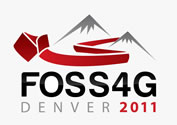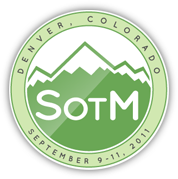Cellular Automata Quantum GIS plugin and web-based application
Cellular Automata (CA) models are increasingly applied in the environmental studies due to their dynamic nature, spatial explicity, and compatibility with the raster format widely used in GIS. We present here a CA Quantum GIS plugin, coupled with a web-based spatial decision support tool (using GeoExt). The application addresses the expansion of invasive species and is developed using open-source geospatial tools. We will describe the CA QGIS plugin as well as the technical issues of the development, such as the trade-off between the model and the query speed, the incorporation of non-geospatial tools, and other issues. The model is capable of predicting coverage of next generations for the species in question. The determination of presence/absence in a location is based on its neighbourhood configuration and its suitability. The neighbourhood rules are empirically elicited and given as probability distributions according to the scale configurations (cell and neighbourhood window sizes) chosen by the user. The suitability is assessed by a number of explanatory variables. Orange data mining open-source libraries are used to build a Naïve Bayes classifier capable of probabilistically assessing the suitability. The user can opt to apply the ready classifier or build a customised one by learning from the provided data. This makes the CA transition rules adaptive to the spatio-temporal variations in the species behaviour. The model is stochastic and allows Monte Carlo simulation. This results in immense output files. Hence, from the usability perspective, special libraries (such as Numeric Python) and data format (such as NetCDF and HFA) are needed for efficient calculation and querying. The web-based tool provides a spatially interactive interface capable of answering management related questions about the scenarios of future coverage, their probabilities and probability distributions.
Anas Altartouri is a doctoral student in the Lahti Center of Aalto University. His research focuses on spatial simulation and environmental decision support tools.











